WBCS~25th Anniversary

Experts say philanthropy kickstarts novel cancer research that leads to cures. Started as the Wisconsin Breast Cancer Showhouse in 1998, WBCS, Inc. is marking 25 years as a 501(c)(3) all-volunteer charitable organization with a mission to advance breast cancer and prostate cancer research. To date, WBCS has had a $117.74 million research impact to defeat these common and still deadly diseases.

How has this happened? By staying laser-focused on our mission. By partnering with Medical College of Wisconsin Cancer Center scientists. By engaging generous sponsors, donors, community partners and dedicated volunteers. By collaborating with welcoming homeowners and talented design professionals who’ve transformed each home into a Showhouse. By holding events and bringing awareness that research takes money, and research brings cures. Look at what all of us have accomplished together!
In this series of eleven articles, homeowners, designers, leadership volunteers, and others who’ve made significant contributions through WBCS to invest in cures, share their experiences. We begin the series this month by featuring our generous year 2000 Showhouse homeowners, Claudia Gavery and Raymond Gavery, MD (1940-2021).
In this series of eleven articles, homeowners, designers, leadership volunteers, and others who’ve made significant contributions through WBCS to invest in cures, share their experiences. We begin the series this month by featuring our generous year 2000 Showhouse homeowners, Claudia Gavery and Raymond Gavery, MD (1940-2021).
2000 Showhouse Homeowners
In 1998, Claudia Gavery opened the front door of her home to find WBCS founder Nancé Kinney and realtor Cecilia Abrams standing there. They wanted to talk about using her Eastside mansion as a WBCS Showhouse. Little did Claudia know this was the beginning of a wonderful relationship with the many designers, committee members, volunteers and others
who make up the successful WBCS organization.
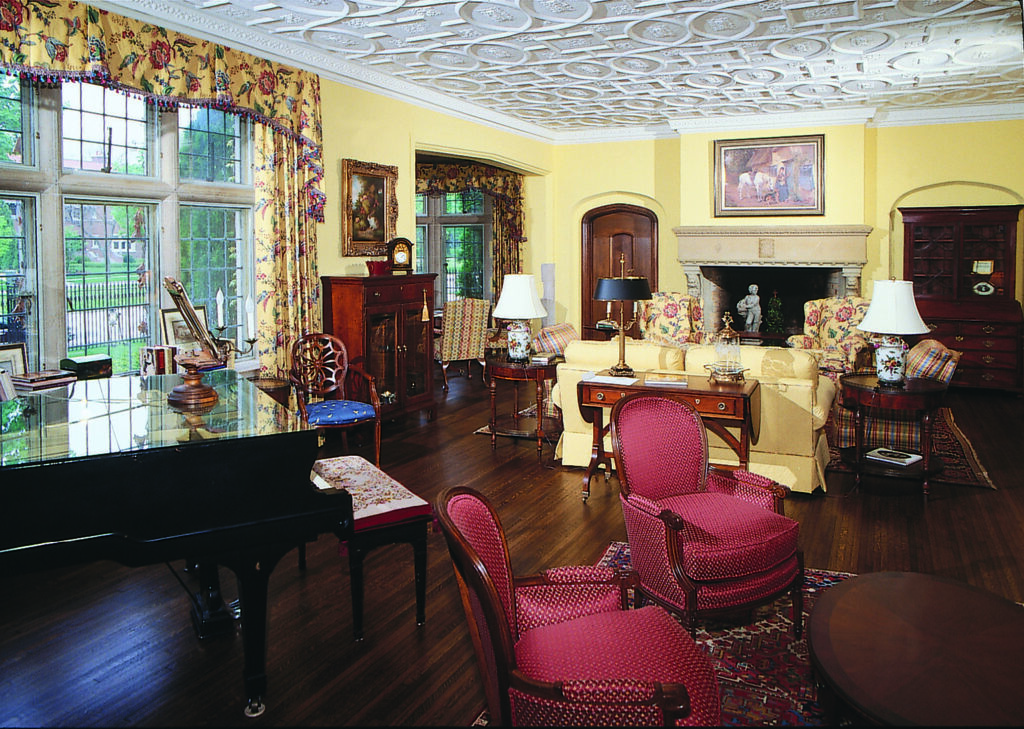

Claudia, a current WBCS board member and co-chair of the WBCS Design Committee, shared memories when her home was the 2000 Showhouse. She and her husband, Raymond Gavery, MD (1940 – 2021), owned the stunning limestone mansion at 3000 East Newberry Boulevard that became the third Showhouse for a Cure.
After speaking with Nancé and Cecilia, Claudia made a decision to volunteer for WBCS to learn more about the organization. Less than a year later, her home became the next Showhouse. Claudia said she experienced many benefits from being involved as a WBCS homeowner, stating, “One of the best things about offering my home as the Showhouse was meeting so many great people.”
Another benefit was working with the designers. Claudia shared, “Everything the designers did was so personalized. They were so kind and they wanted us to appreciate what they were doing in each room.”
As an example, Dr. Gavery admired Winston Churchill, so one designer created a Churchill bathroom complete with a vintage typewriter. A beautiful mural of Claudia’s beloved Westies was painted inside the iconic British public telephone booth located in the pub.
Claudia feels passionately about the WBCS mission. At the time of the 2000 Showhouse, her sister had undergone a double mastectomy and a close cousin had lost her battle to breast cancer.
Twenty-three years later, Claudia is still active with WBCS. She is a board member, and has served on many committees including the nominating, gala, design and house committees. Claudia remarked, “It is easier getting homeowners to donate their homes since I have done it myself. I have the experience of going through the process and can answer questions of potential Showhouse owners.”
Asked if she would donate her home again, she said, “Most definitely! I think you meet wonderful people. Your home is being used for a very good cause. You get your whole family involved, and it is fun.”
If you are interested in offering your home as a future WBCS Showhouse, please send an email to WBCS@breastcancershowhouse.org.
2000 Showhouse Designers
The 2000 Showhouse for a Cure is one of the most memorable of the Showhouses for the designers and for visitors. Betsy Peckenpaugh (uncommon walls and Optimist Bazaar) and Margaret Weis (Calico) were the designers for the third floor ballroom that was reimagined as a London tea room.
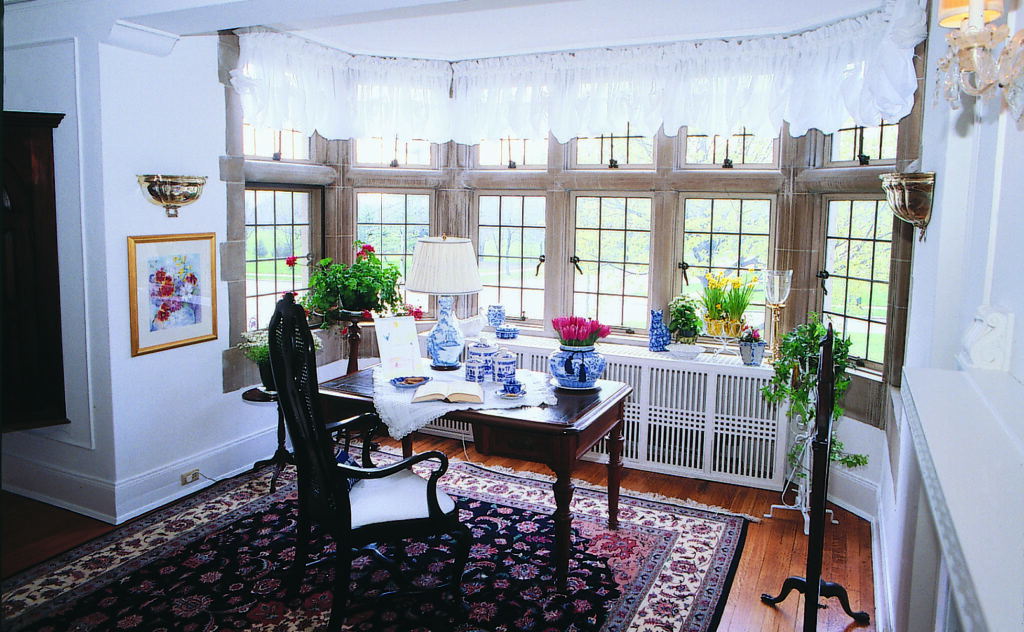
They remember coming to the project when many of the rooms were already in the process of being installed and being challenged by the parameters of the room’s use and the colors that had already been chosen. As Betsy says, “I like parameters placed by the budget and existing items–it makes for more interesting designs. And having parameters makes it
easier to design from.”
They were up to the challenge, pulling together fabrics for the tea room table skirts and napkins and employing Betsy’s legendary talents as an artist by custom painting the wall panels.
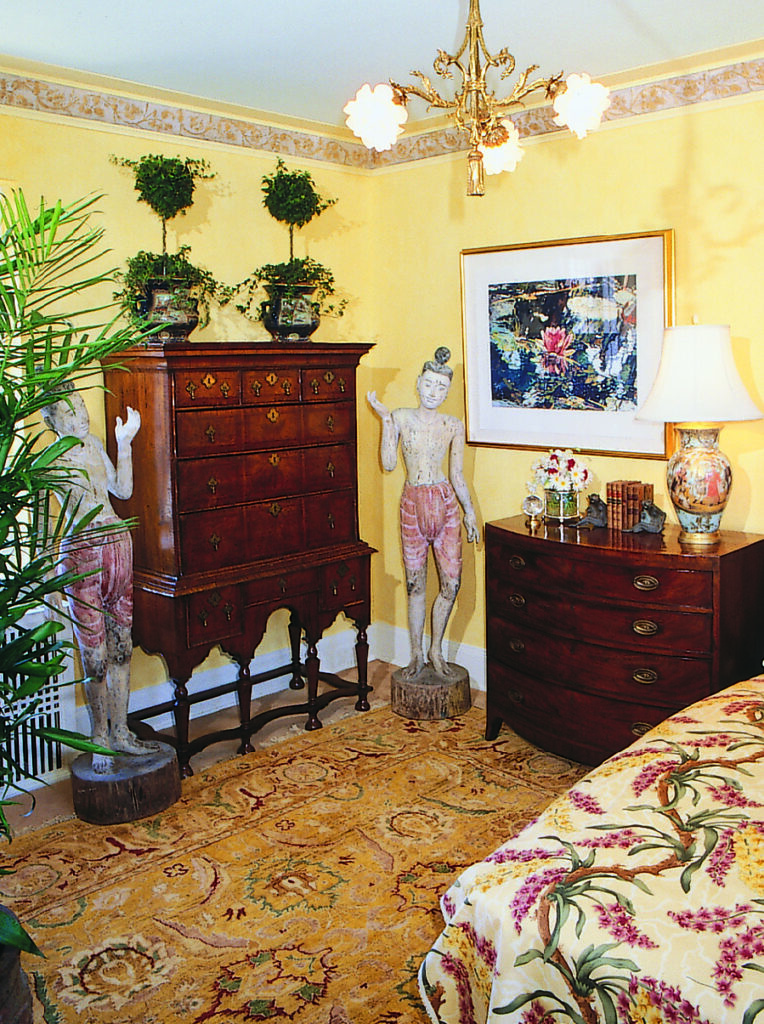
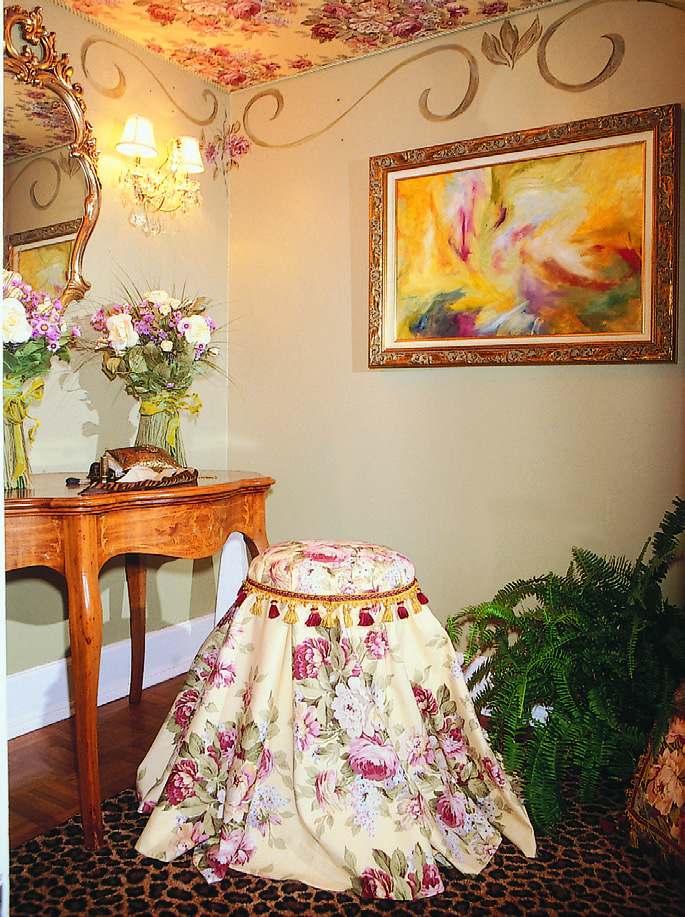
This was the first Showhouse for Betsy and Margaret. Coming in late, they did not have a chance to meet many of the other designers. But, over the years they say, the camaraderie has grown and although there is little exchange of ideas at the beginning, as the designs mature and fabrics, furniture and accessories are selected and ordered, the exchange increases. When asked about the design cohesiveness of the Showhouse, neither Betsy nor Margaret thinks it is a surprise. Not only is the highly talented group of designers up to date on the current colors, design trends and styles but feel that all of the designers, to some degree. are influenced by the home’s architecture.
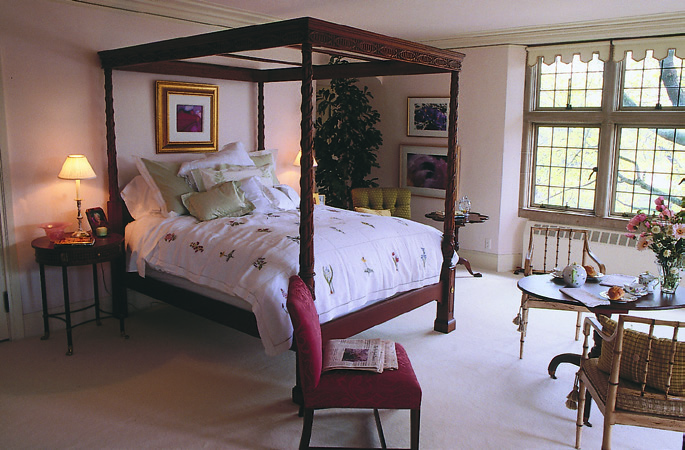
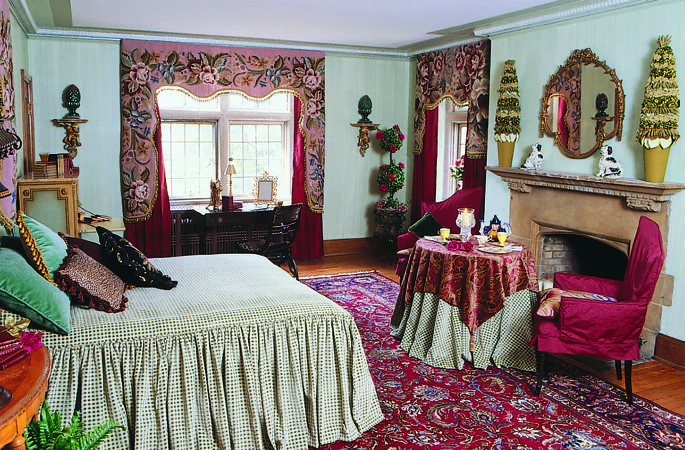
Both Margaret and Betsy say they usually have a broad-brush idea for the room design pulled together in about a half hour, then they probably spend as many as 40 hours selecting fabrics, furniture and accessories. Betsy shared that the one thing that continues to amaze her is the amount of time it takes to install the room (about 6 weeks starting April 1) and how physically demanding it is to move the furniture into place and back out again after the Showhouse closes.
And why do they do it? Why has each of them designed rooms in at least 19 of the 23 Showhouses? Margaret spoke of Calico’s support of fabrics, furniture and accessories. That, coupled with Betsy’s artistic talents, has been a very successful combination for creating their beautiful and interesting rooms. Both designers agree the WBCS mission motivates them and fuels their passion as a design team to help ensure the success of each Showhouse for a Cure.

This article is from the
EY February 2023 Issue



